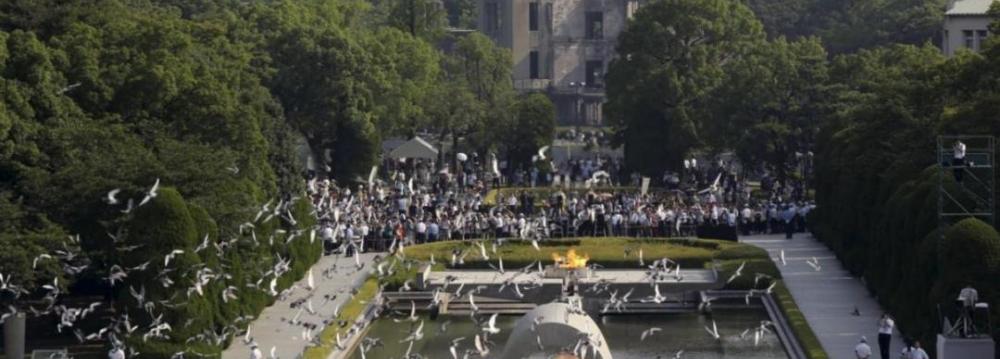Next week, Secretary of State John Kerry will become the highest-ranking American government official to visit Hiroshima, where 140,000 Japanese died from the first of two atomic bombs dropped by his country in the closing days of World War II more than 70 years ago.
Kerry and the other Group of Seven foreign ministers are scheduled to visit the Hiroshima Peace Park on Monday and lay flowers to honor the dead. At least in Japan, the event will likely overshadow the rest of the foreign ministers’ annual two-day meeting, where terrorism, maritime security and nuclear non-proliferation will be discussed, AP reported.
Japan hopes the meeting in this city will revive momentum for efforts to stop the spread of nuclear weapons, a cause that has flagged in recent years. Weapons stockpiles have been slow to decline, and Japan’s own accumulation of plutonium for use in power generation has caused security concerns.
Expectations are now running high among Japanese for President Barack Obama, a Nobel peace laureate who has proposed a nuclear-free world, to follow suit during the G-7 leaders’ summit in May, to be held in the coastal city of Shima in central Japan.
“Of course it would be best if Obama-san comes,” said SunaoTsuboi, a 90-year-old A-bomb survivor and head of the Hiroshima branch of a large survivors’ organization. “I hope he overcomes contentions surrounding the atomic bombings.”
For many years, senior US government officials avoided going to Hiroshima because of political sensitivities. Many Americans believe the dropping of atomic bombs on Hiroshima and Nagasaki in August 1945 were justified and hastened the end of the war.
Japanese atomic bomb survivors’ groups, meanwhile, have campaigned for decades to bring top officials from the US and other nuclear weapon states to see Hiroshima’s scars as part of a grassroots movement to abolish nuclear weapons. They are not seeking an apology.
No serving US president has visited the site. It took 65 years for a US ambassador to attend Hiroshima’s annual memorial service and six more years to win Kerry’s visit.
“Long and delicate negotiations were needed to arrange the group visit for the six foreign ministers to the peace park and nearby museum,” Japanese Foreign Minister Fumio Kishida said, because of differences of opinion on atomic weapons among G-7 members, which include Germany, Italy, Britain, Canada, France, the US and Japan. France and Britain, along with the US, have nuclear weapons.
Kishida hopes to win agreement to issue a “Hiroshima declaration” in addition to the ministers’ final communique that will draw renewed attention to nuclear disarmament and non-proliferation efforts. Japanese officials say that the international community’s resolve to stop the spread of nuclear weapons has weakened amid US-Russia contention over Ukraine, North Korea’s nuclear program and distraction by the Middle East conflict.
The White House declined to comment on whether Obama planned to visit Hiroshima during the May summit.
“It is a touchy, sensitive subject, and many Americans don’t want to really revisit that past,” said Jeff Kingston, director of Asian studies at Temple University Japan, about Kerry’s - and possibly Obama’s - visit. “But I think it’s high time that they did so.”


